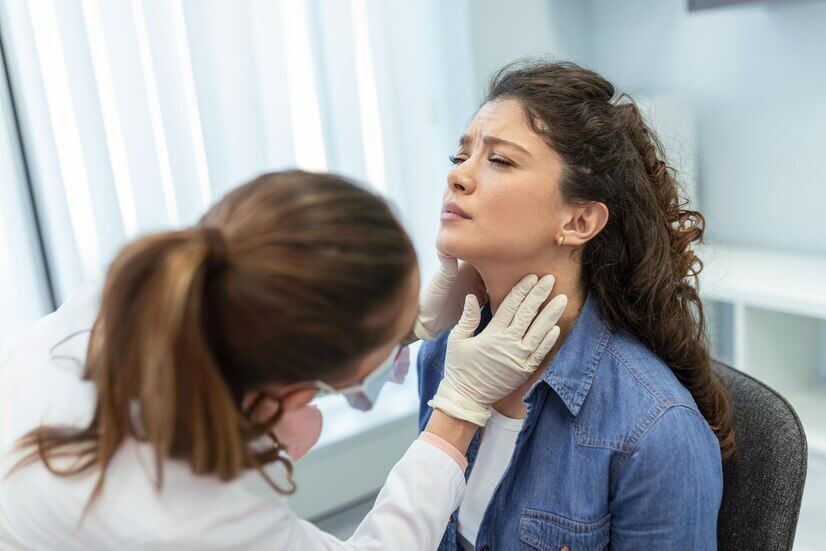A test that measures the amount of glucose, or sugar, in your blood is a blood glucose test. After the examination, a doctor advises the medicines and procedure patients to care for them. This blog will provide you with the entire information about this test. Moreover, we will educate you about the types and reasons for this test. You will also learn about the procedure of this test, and we will let you know when a person should go for this. So, get ready to have a visit to the doctor’s chamber and laboratory.
A Short Intro to Blood Glucose Test
A blood glucose test is essential in determining the quantity of glucose in your blood, a necessary medical procedure. When you have this test, a kind medical practitioner gently takes a little sample of your blood, often from a vein in your arm, ensuring you are comfortable the whole time. After obtaining the selection, experts thoroughly examine it to ascertain your blood glucose level.
Diabetes, a disorder that affects how your body controls blood sugar, may be diagnosed and managed using this test. You may jointly decide on your food, exercise program, and medicine with the help of your compassionate healthcare provider by routinely testing your blood sugar levels. It will help you maintain stable blood sugar levels and your general well-being.
What circumstances call for a Blood Glucose Test?
You may require a blood glucose (sugar) test for three significant reasons:
- Your doctor may have prescribed a basic or comprehensive metabolic panel, including a glucose blood test, as part of routine bloodwork.
- Your blood sugar levels may be high or low, and these symptoms might indicate diabetes or another problem.
- Routine blood tests for glucose may be necessary to check your blood sugar levels if you use a long-term medicine, such as corticosteroids.
Types of Blood Sugar Level Tests
A doctor can recommend different types of sugar tests for various reasons. First, the doctor will ask about your health condition and then suggest a test according to your needs. In the following passages, we will tell you about the different trials with a little explanation.
Fasting Plasma Glucose Test
The fasting plasma glucose test analyzes blood sugar levels following an overnight fast. Diagnosing diabetes and prediabetes is a popular application for it. The service provider takes blood samples for this test before eating or drinking anything. The findings assist medical practitioners in determining a person’s capacity to control blood sugar during fasting periods.
Oral Glucose Tolerance Test (OGTT)
The OGTT measures the effectiveness with which the body processes glucose over time. After consuming a glucose solution, the participants take regular blood samples following the initial fasting blood sample. The test measures poor glucose tolerance and aids in diagnosing gestational diabetes. Healthcare professionals frequently use OGTT to evaluate insulin resistance and identify Type 2 diabetes because it provides information on how the body reacts to glucose consumption.
What is the most popular glucose test?
The most common glucose tolerance test is oral glucose tolerance testing (OGTT). Before the trial, healthcare providers will obtain a blood sample from you after you have refrained from eating or drinking anything for at least 8 hours.
Hemoglobin A1C Test (HbA1c)
The Hemoglobin A1c test assesses the typical blood sugar levels during the previous two to three months. It evaluates the amount of hemoglobin that is associated with glucose. To track their long-term glucose management, people with diabetes can benefit from this test. The HbA1c test is more practical for patients because fasting is not necessary. The findings aid in the customization of treatment regimens and the evaluation of diabetes control techniques by healthcare professionals.
Which diabetes test is the best?
The primary blood test for diabetes diagnosis is the HbA1c test. It examines your average blood sugar levels over the previous two to three months. You do not have to get ready for an HbA1c. An arm vein draws a tiny blood volume for this quick and easy test.
Random Plasma Glucose Test
This test measures blood sugar levels randomly throughout the day, regardless of when you last ate. It is practical for rapidly identifying possible diabetic symptoms. This test is less accurate at detecting diabetes or prediabetes because it doesn’t require fasting. This test often aims to screen for acute hyperglycemia when there are urgent circumstances, such as severe thirst, frequent urine, or exhaustion.
What is the initial diabetes test?
A blood glucose test, which gauges the amount of glucose in the blood after fasting or a random sample, is frequently the initial test for diabetes.
With Continuous Glucose Monitoring (CGM)
The examiner places a tiny sensor beneath the skin to detect interstitial glucose levels, often on the belly, enabling continuous monitoring of blood sugar levels over many days. Individuals with diabetes can track their glucose levels and see trends and fluctuations thanks to the data obtained. Making educated choices about nutrition, exercise, and insulin dose results in better diabetes control and enhanced health.
The Procedure uses an Elbow Vein
An inner elbow vein will likely be used to take blood for a blood glucose test by a medical expert. The process is relatively straightforward:
- To eliminate any bacteria, they scrub the area with an antiseptic like alcohol.
- Your veins enlarge with blood due to the elastic band they wrap around your upper arm.
- They put a clean needle in a vein. When the needle is inserted, you can experience mild to severe pain but can lessen the discomfort by relaxing your arm.
- After that, blood is extracted into a tube connected to the needle.
- Once blood has been drawn, the medical practitioner removes the needle and covers the puncture site with a bandage.
- Pressure will be administered to the puncture site for a few minutes to avoid swelling.
A finger-prick test
If you have diabetes, your doctor could have advised you to use a continuous glucose monitor (CGM) or a blood glucose meter to check your glucose levels at home. You should find instructions on how to draw blood from your finger in your test kit. Generally, you’ll do the following actions:
- Give your hands a thorough cleaning to ensure good drying with soap and water.
- Prick a fingertip on the side using the lancet included in your package.
- A test strip’s edge should be touched to the blood drop that appears following the finger prick.
- Set the ribbon inside the meter.
- Keep score and record your outcomes.
- Put the lancet and the meter in the trash.
When to go for this test?
You must consider getting a blood glucose test if you have any risk factors for diabetes, such as a family history of the disease, being overweight, leading a sedentary lifestyle, or having high blood pressure. Additionally, it’s a good idea to get checked if you have any symptoms like frequent urination, extreme thirst, unexplained weight loss, or lethargy. Regular tests are advised for adults over 45, especially if you are overweight or have other risk factors, to protect your health. Always be proactive!
Final thoughts
A blood glucose test is a crucial procedure frequently for identifying diabetes or assisting those who already have the illness in managing it. Your doctor could recommend a blood glucose test during an annual physical examination. However, if you notice any new signs of diabetes, such as thirst that isn’t going away, frequent urination, or blurry vision, talk to your doctor about checking your blood sugar levels.
Does sugar cause the WBC to drop?
Sugar directly and severely impacts the immune system, namely WBCs. The responsiveness of WBCs reduces by 40% when consuming 100 grams of sugar or a 1-litre soda bottle. It may render our immune system inoperable for four to five hours. By phagocytosing germs and viruses, WBCs carry out their immunological function.










